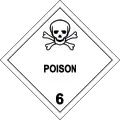Méthylsélénol
Le méthylsélénol, ou méthanesélénol, est un composé chimique de formule CH3SeH. Ce sélénol est l'analogue structurel sélénié du méthanethiol CH3SH, il se présente sous la forme d'un liquide incolore volatil et inflammable à l'odeur nauséabonde.
| Méthylsélénol | |||
  Structure du méthylsélénol |
|||
| Identification | |||
|---|---|---|---|
| Nom UICPA | méthanesélénol | ||
| No CAS | |||
| PubChem | 6327000 | ||
| ChEBI | 64685 | ||
| SMILES | |||
| InChI | |||
| Apparence | liquide incolore à l'odeur nauséabonde[1] - [2] | ||
| Propriétés chimiques | |||
| Formule | CH4Se [Isomères] |
||
| Masse molaire[3] | 95 ± 0,03 g/mol C 12,64 %, H 4,24 %, Se 83,12 %, |
||
| Précautions | |||
| Directive 67/548/EEC[1] - [2] | |||
 T |
|||
| Transport[1] - [2] | |||
|
|||
| Unités du SI et CNTP, sauf indication contraire. | |||
Des études indiquent qu'il pourrait avoir une action bénéfique sur certains cancers[4] - [5].
Notes et références
- (en) Fiche de sécurité du méthylsélénol du 20 novembre 2008, Fisher Scientific
- (en) Fiche de sécurité du méthylsélénol du département Chimie de l'université d'Oxford
- Masse molaire calculée d’après « Atomic weights of the elements 2007 », sur www.chem.qmul.ac.uk.
- (en) Junxuan Lü et Cheng Jiang, « Selenium and cancer chemoprevention: hypotheses integrating the actions of selenoproteins and selenium metabolites in epithelial and non-epithelial target cells », Antioxidant & Redox Signaling, vol. 7, nos 11-12, , p. 1715-1727 (lire en ligne) DOI 10.1089/ars.2005.7.1715
- (en) Huawei Zeng, Min Wu et James H. Botnen, « Methylselenol, a Selenium Metabolite, Induces Cell Cycle Arrest in G1 Phase and Apoptosis via the Extracellular-Regulated Kinase 1/2 Pathway and Other Cancer Signaling Genes1–3 », Journal of Nutrition, vol. 139, no 9, , p. 1613-1618 (lire en ligne) DOI 10.3945/jn.109.110320
Cet article est issu de wikipedia. Text licence: CC BY-SA 4.0, Des conditions supplémentaires peuvent s’appliquer aux fichiers multimédias.
